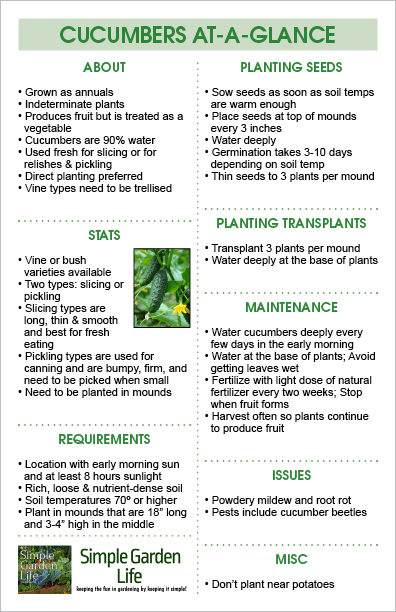Today’s podcast and corresponding article are all about growing great cucumbers, or more specifically, how to get the best harvest from your plants this year!
But knowing how to grow cucumbers correctly can make a big difference between a great harvest or a poor one.
Listen in below to our complete podcast on the secrets to growing great cucumbers, or read on to view it in article form. Either way, armed with a few special tips and tricks, you will be set to grow and harvest your best crop ever this year!
Cucumbers are one of the most popular vegetable plants to include in your garden. Not only are they delicious eating fresh, but they also make all kinds of different pickles and relishes that you can enjoy all year long.
While cucumbers are technically fruits, they are usually considered vegetables because of how they are used in the kitchen. They are tropical plants that thrive in warm climates, so soil temperature is really important to them. Cucumbers need warm soil and plenty of water to grow well.
If you can succeed in keeping your plants nice and healthy, they will reward you with more cucumbers than you can eat in one season. Just follow these simple tips and suggestions and you can do just that.
Varieties of Cucumbers
There are two main varieties of cucumbers: Pickling and Slicing. Cucumbers also fall into two main plant styles: Vining and Bush.
Pickling varieties are short and stout and are used to be made into pickles and relishes. They usually have bumps on their exterior and are thinner skinned so pickling brines can be absorbed. They also typically have smaller seeds. Pickling cucumbers should be picked when they are small and firm.
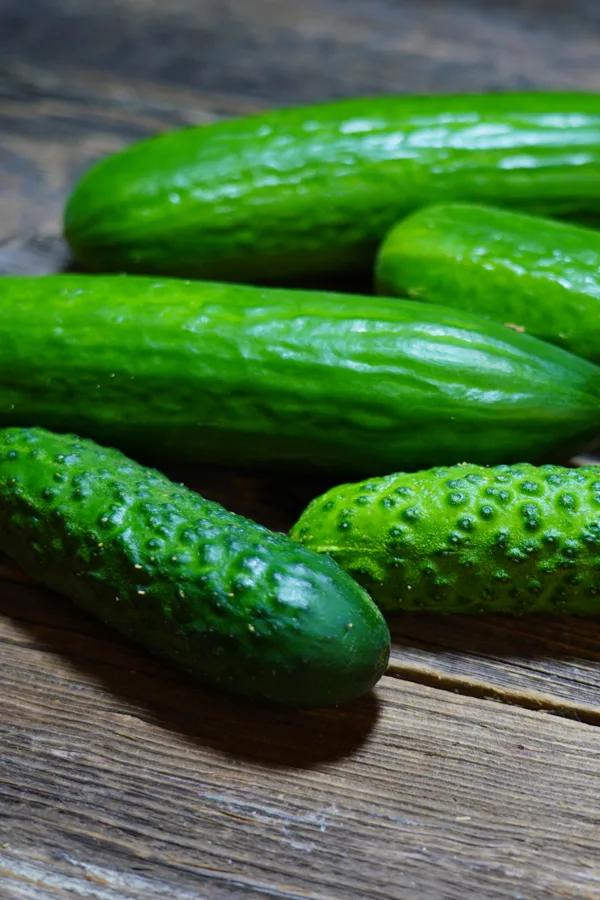
Slicing cucumbers, on the other hand, are usually long, smooth, and thin and are meant for fresh eating. While some varieties are seedless, slicing cucumbers typically have larger seeds and are picked when they are longer.
Vining cucumber plants need some type of support while they grow. Bush styles, however, are perfect for smaller spaces or when grown in containers. (More on this later!)
How To Plant, Grow & Maintain Cucumbers
Planting Cucumber Plants
The Location
You want to plant your cucumbers in a location where they can receive early morning sun. They need a minimum of 8 hours of sunlight to create strong, hardy vines. Planting them in a place where they can get early morning sun will help dry out the dew on the leaves from nighttime and lessens the chances of mildew.
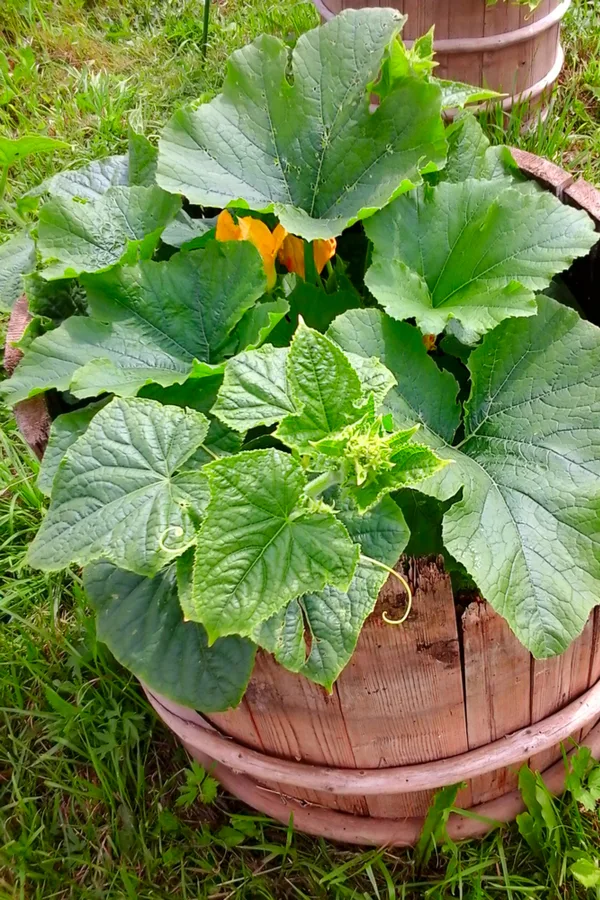
Also, consider your crop rotation (which you should be doing for all your plants)! Vegetables, especially heavy feeders like cucumbers, need to be rotated so they aren’t planted in the same spot each year. This allows the soil to replenish lost nutrients as well as helps to minimize diseases and pests. Try to not repeat planting locations for 3-4 years if you can.
If you are using raised beds or containers, change their soil each year for the same reasons.
Soil Type
Cucumber plants need rich, nutrient-dense soil whether they are planted in-ground or in containers and raised beds. The soil needs to be light and airy so their roots can easily grow while excess water can quickly drain.
If you have hard soil such as clay, consider amending it with compost or even sand. You can even add some perlite to your soil to help lighten it up as well. The compost will not only help loosen the soil, but it will also help add in vital nutrients.
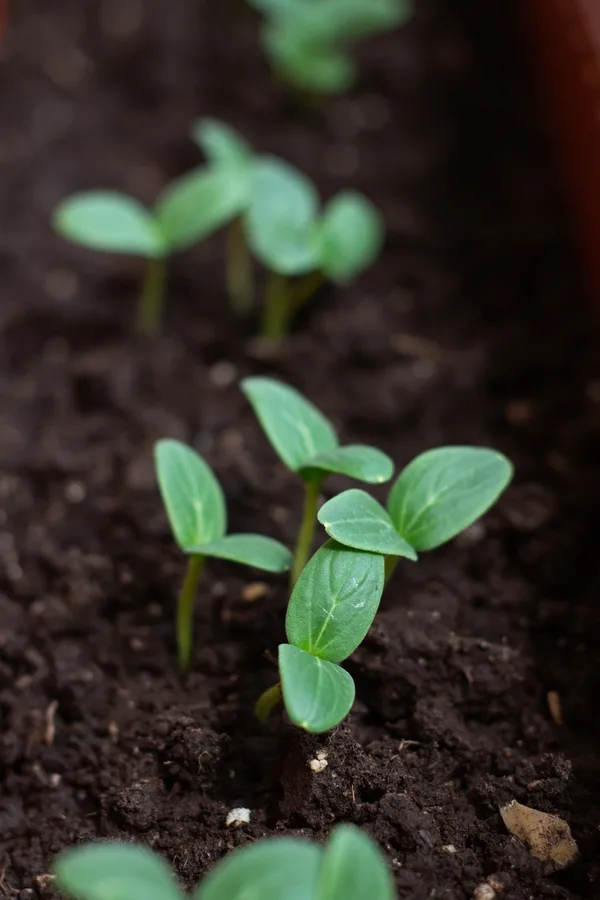
Seeds vs Transplants
Since cucumber plants thrive in warmer climates, the soil temperature needs to be at 70 degrees or above when you plant them. If you live in a cooler climate, you can choose to start your seeds indoors and then transfer them into the ground once temperatures rise. However, starting from seeds works just as well as long as the soil is warm enough.
A great tip is to start some plants indoors and later plant some as seeds in the ground. This is called Succession Planting. It allows you to have fruit ready earlier from the transplants and then you can have fruit ready later in the season from the seeds.
Using Mounds To Grow Your Cucumbers
Cucumbers grow best when they are planted in mounds since they are susceptible to rot. They also need room for their roots to spread out, and mounds help facilitate this.
Create mounds that are around 18” long and about 3-4” high in the middle. Space the mounds a few feet apart from one another. Transplant 3 healthy plants into each mound, adding a few cups of compost for each one as you go along. If you are sowing directly into the ground, you can plant seeds every 3″ and then thin once the seedlings are a few inches tall, leaving 3 plants per mound.
If you are growing the cucumbers into containers, you still need to mound them up a bit to allow the excess water to run off and not pool at the base of the plant.
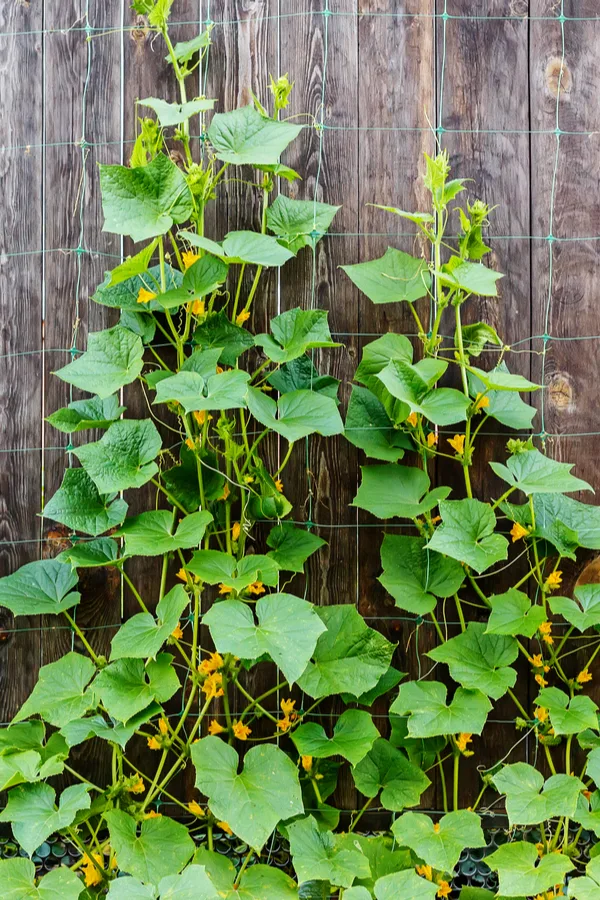
To Support or Not To Support
As mentioned earlier, vining cucumbers are going to need some type of support to help them stay healthy and grow well. Supports can be anything from hog panels, homemade trellises, or even corn stalks and sunflower stems. The main goal with vining cucumbers is to keep the plant off the ground to promote good airflow and reduce the chance of rotting.
Bush cucumbers are more compact and are great for containers or for planting in straw bales. (To learn all about planting in straw bales, check out this article on How Growing Cucumbers In Straw Bales Works With Amazing Success.)
When plating bush plants directly in the ground, the cucumbers must have some sort of mulch underneath the plant to help keep the plants off the soil. Mulch also helps to keep their roots moist without allowing them to rot. Mulch items can include straw, shredded leaves, grass clippings, etc.
Careful Of What You Plant Nearby
Cucumber plants do not always play nice with all other types of plants and vegetables. One plant to avoid placing nearby is potatoes. Potatoes can not only attract pests, but they release a substance into the ground that can hinder the growth of cucumber plants (and that’s the opposite of what we want)
There are some plants that work great when grown with cucumbers though. Radishes help to repel harmful pests and insects like aphids and beetles. Simply plant 5 to 10 radish seeds around the edges of your cucumber mounds and let them grow. Not only will you get anti-pest benefits, but you’ll also have fresh radishes when they are fully grown.
Long Term Care – How To Grow and Maintain Cucumbers
Now that the cucumber plants are in the ground in the perfect location, how can you make sure to keep them healthy and produce a great harvest?
Fertilize Early On
One of the best ways to get your cucumbers off to a great start is by fertilizing. We always say that slow and steady is the way to go! You should apply a light dose of all-natural fertilizer such as Homemade Compost Tea or other organic fertilizer every two weeks. Once the cucumbers begin to form their first fruit though, you should stop fertilizing so the plants can focus on fruit production.
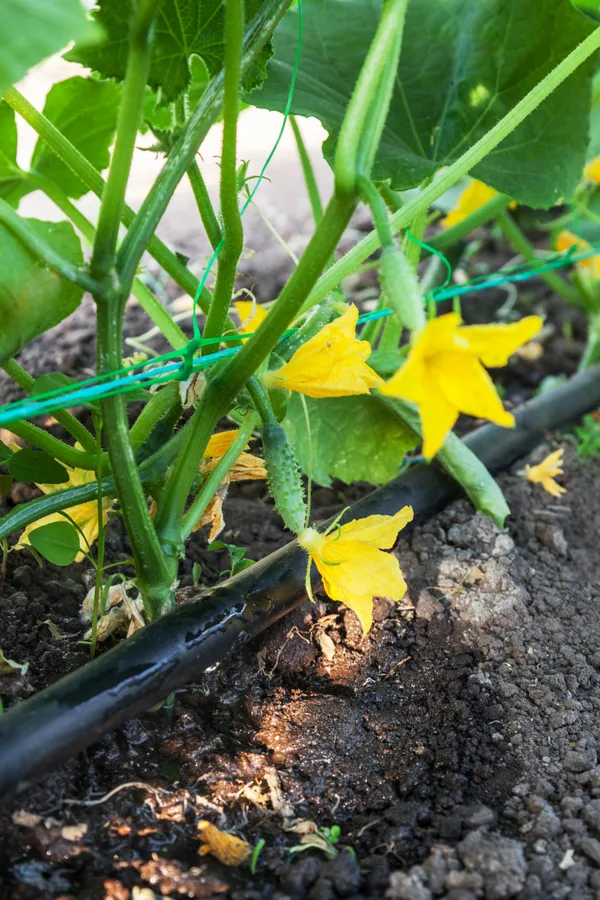
Water Is So Important!
Did you know that cucumbers are made up of over 90% water? So how often and when you water your cucumber plants is very important. If you overwater, the leaves will turn yellow and eventually brown around the edges. Underwater the plants and they start to dry out and wilt.
The key is to watering your cucumber plants is to water deeply but not every day. When you do water them, do so in the early morning and at the base of the plants so the leaves don’t get wet. Wet leaves will leave cucumber plants susceptible to Powdery Mildew. Using a simple drip irrigation hose is a great way to ensure the water goes directly to the plant’s roots as opposed to on the leaves.
Bonus Tip: You may want to consider marking the ground with a stake or tag so you know where you originally planted and where their roots are. Cucumber plants can get rather unruly as they grow!
Diseases and Pests
Cucumbers are susceptible to pests like cucumber beetles and can often get powdery mildew on their leaves. Once you start to see damage though, it is hard to reverse the effects, so prevention is the key! Check out this article about How To Protect Cucumber Plants From Beetles And Powdery Mildew for more information on keeping your plants healthy and pest-free.
Harvest Time
It’s finally time to enjoy all that hard work! Another big key to a long-lasting cucumber harvest is to pick your fruit early and often. Cucumber plants are Indeterminate, meaning they continue to produce fruit until the growing season is over or the plant dies. So the more often you pick, the more your plants will produce.
Make sure you pick the cucumbers when they are smaller because you will be amazed at how much one cucumber can grow overnight. No one wants to eat a big, yellow cucumber that is flavorless and full of seeds.
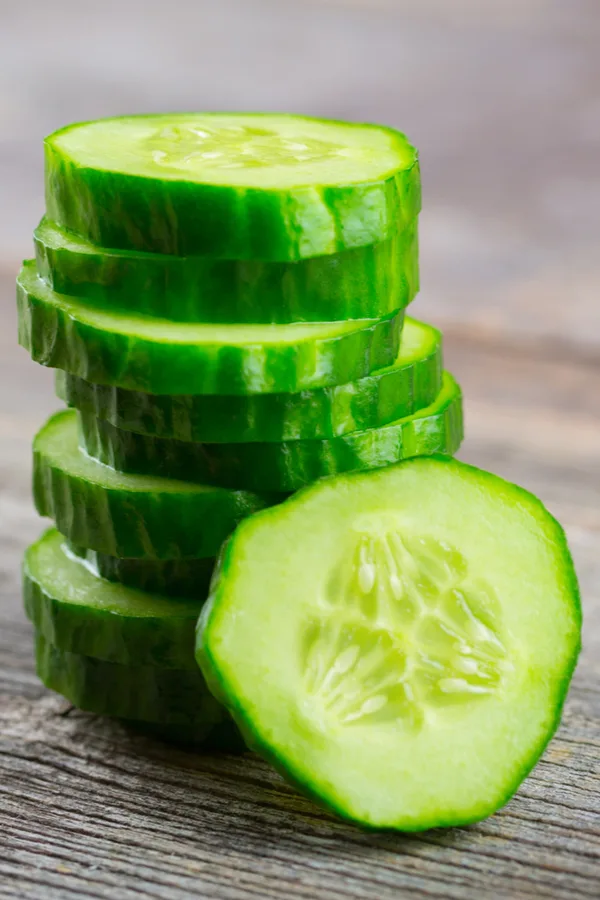
To Conclude…
Whether you are growing cucumbers for fresh eating or for pickling and relishes, you can grow amazing cucumber plants with these simple tips and suggestions.
Make sure to check out our podcast for cucumber information on the go: How To Grow An Amazing Crop Of Cucumbers. Enjoy eating all those delicious vegetables (or fruits!) your healthy cucumber plants produce.
Feel free to download, print out, or save our Cucumber At-A-Glance sheet. It is sized for half letter printing but can be scaled if needed.
